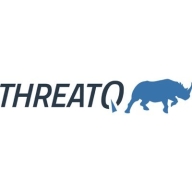

Recorded Future and ThreatQ are competitors in the threat intelligence market. Based on the analysis, Recorded Future holds an advantage due to its advanced analytics and real-time detection capabilities.
Features: Recorded Future offers advanced predictive analytics, real-time threat detection, and integration with multiple data sources for comprehensive threat insights. ThreatQ distinguishes itself with a threat library, customization capabilities, and a centralized platform for threat intelligence management.
Ease of Deployment and Customer Service: Recorded Future is recognized for quick deployment and seamless integration with existing security systems, along with extensive support options. ThreatQ provides a flexible deployment model tailored to organizational needs, allowing significant configuration adjustments. The difference in support is noted between Recorded Future’s ease of setup and ThreatQ’s customization-focused approach.
Pricing and ROI: Recorded Future offers a straightforward pricing model with a favorable ROI through rapid implementation and efficient time-to-value. ThreatQ may have a higher initial setup cost but provides ROI through powerful features and long-term benefits. Cost-effectiveness varies based on the enterprise’s priority of lower upfront costs against customized capability returns.
| Product | Market Share (%) |
|---|---|
| Recorded Future | 9.7% |
| ThreatQ | 2.1% |
| Other | 88.2% |
| Company Size | Count |
|---|---|
| Small Business | 2 |
| Midsize Enterprise | 3 |
| Large Enterprise | 9 |
Recorded Future is a powerful and effective cyber threat intelligence (CTI) platform that aims to empower administrators to protect their organizations from threats, both known and unknown. The machine learning engine that Recorded Future utilizes can process the same amount of data that 9,000 analysts working five days a week, eight hours a day for an entire year can process. It simplifies threat detection and remediation so that organizations can focus on other tasks.
Recorded Future Benefits
Some of the ways that organizations can benefit by choosing to deploy Recorded Future include:
Recorded Future Features
Some of the many features Recorded Future offers include:
Reviews from Real Users
Recorded future is a solution that stands out when compared to its top competitors. Two major advantages it offers are the threat research tools that it provides and the threat monitoring capabilities that it enables users to leverage.
A security operations lead at a comms service provider writes, “Recorded Future covers a lot of different use cases. For example, we are using it for threat intelligence research. We do use the tool to make active research on what is found around the threat. We look at patterns, for example, and see what can be elaborated on from that.”
They also write, “We can also use it for active monitoring in the customer interface. We can monitor the business side of a campaign. We can monitor for specific threats or market activity on the dashboard. We can develop queries to run in a continuous mode in order to get the best reviews.”
ThreatQ is a cybersecurity platform designed to enhance threat intelligence operations. It centralizes and manages threat data, allowing organizations to identify and respond to threats more efficiently.
ThreatQ is designed to empower security teams by personalizing threat intelligence and automation processes. It integrates with existing technologies, streamlining data collection and distribution. This promotes efficient detection, investigation, and response to security incidents, improving overall cybersecurity posture and resilience.
What are the key features of ThreatQ?ThreatQ is versatile in industries like finance and healthcare, where cybersecurity is crucial. It facilitates swift threat identification and risk management, essential for protecting sensitive data and complying with industry regulations. Its adaptability allows it to fit into diverse security architectures, making it a valuable asset across sectors.
We monitor all Threat Intelligence Platforms (TIP) reviews to prevent fraudulent reviews and keep review quality high. We do not post reviews by company employees or direct competitors. We validate each review for authenticity via cross-reference with LinkedIn, and personal follow-up with the reviewer when necessary.